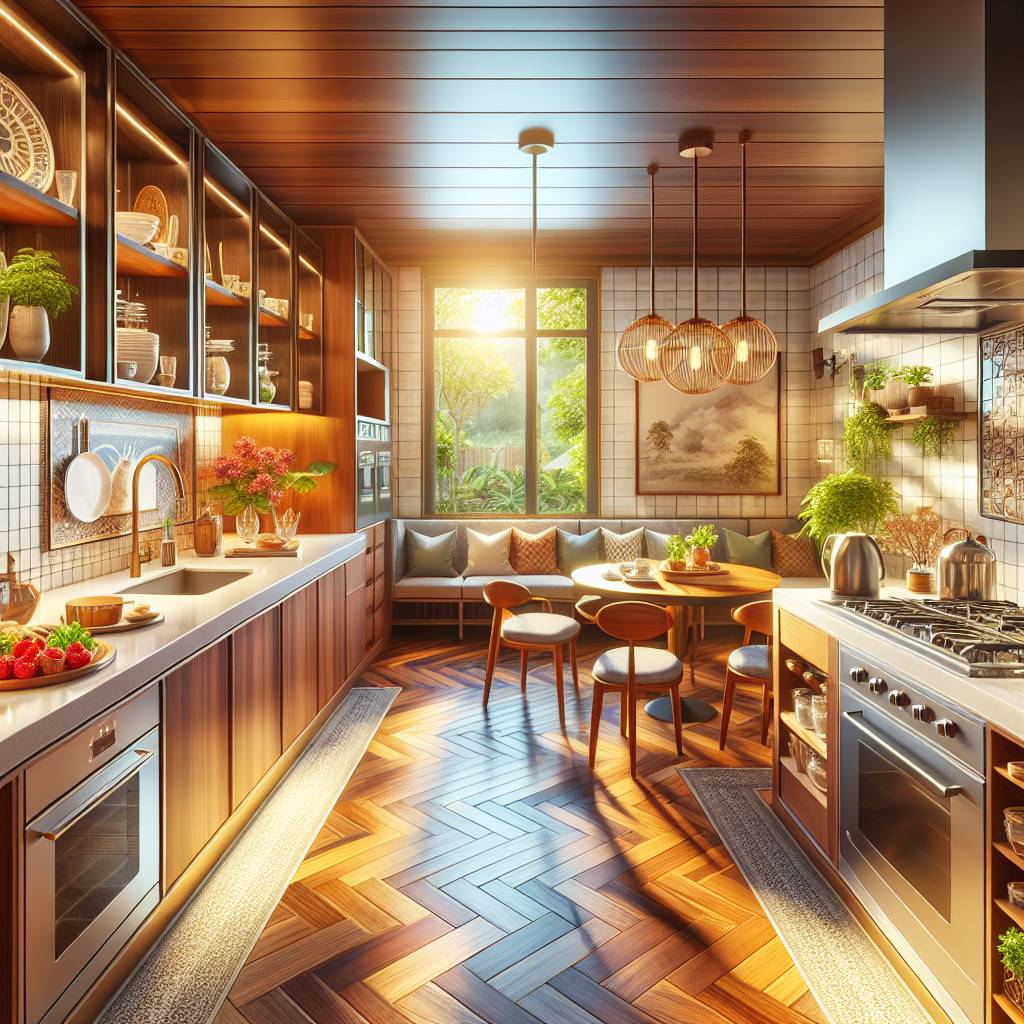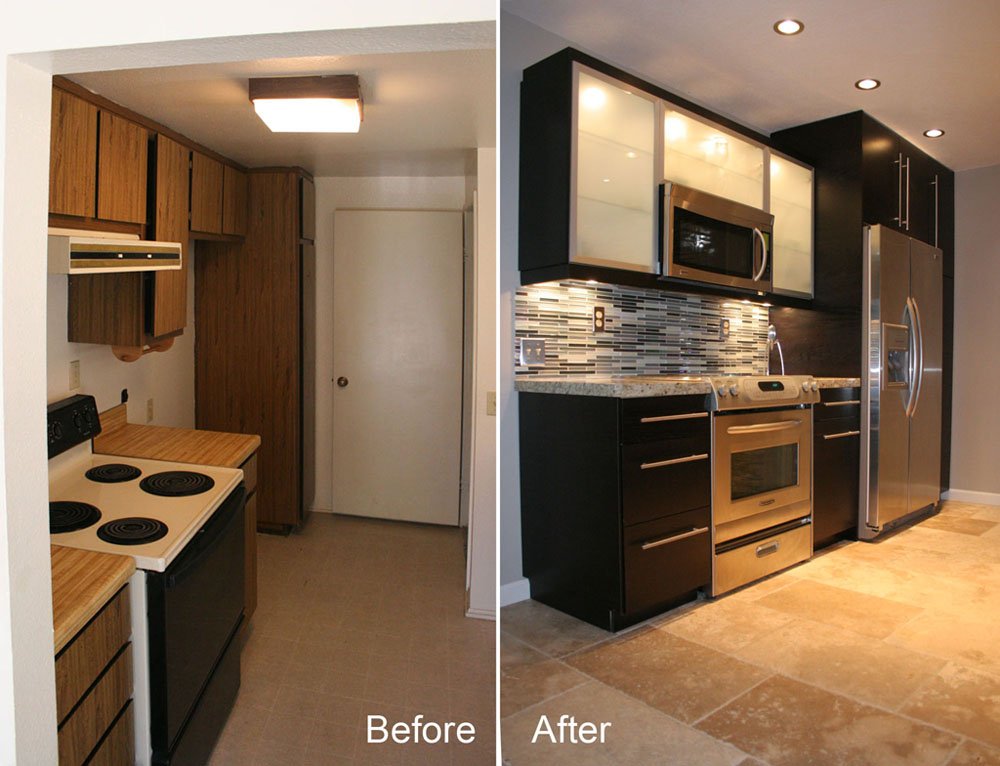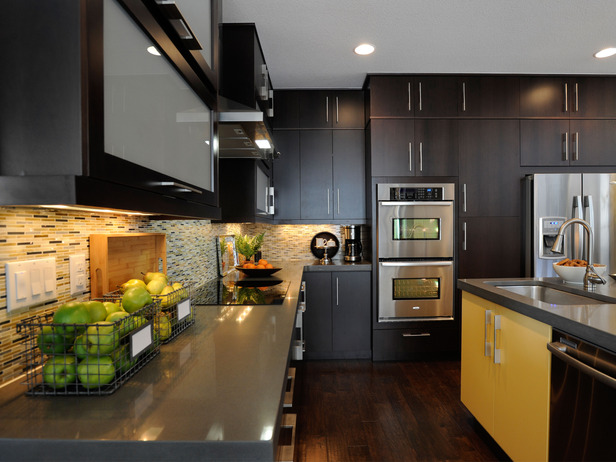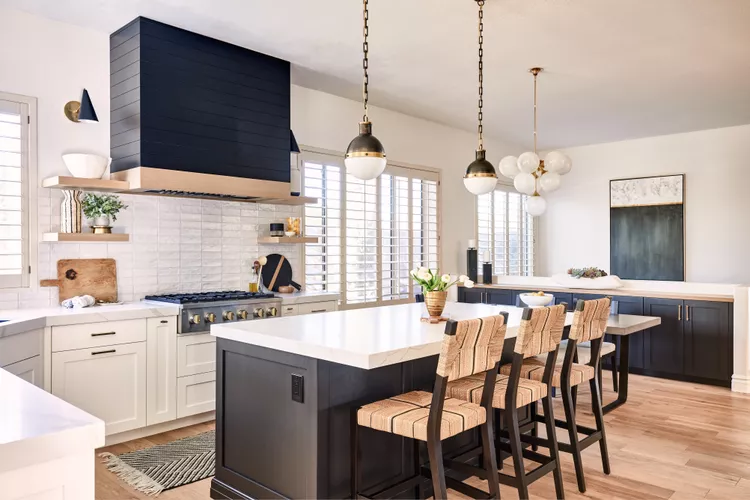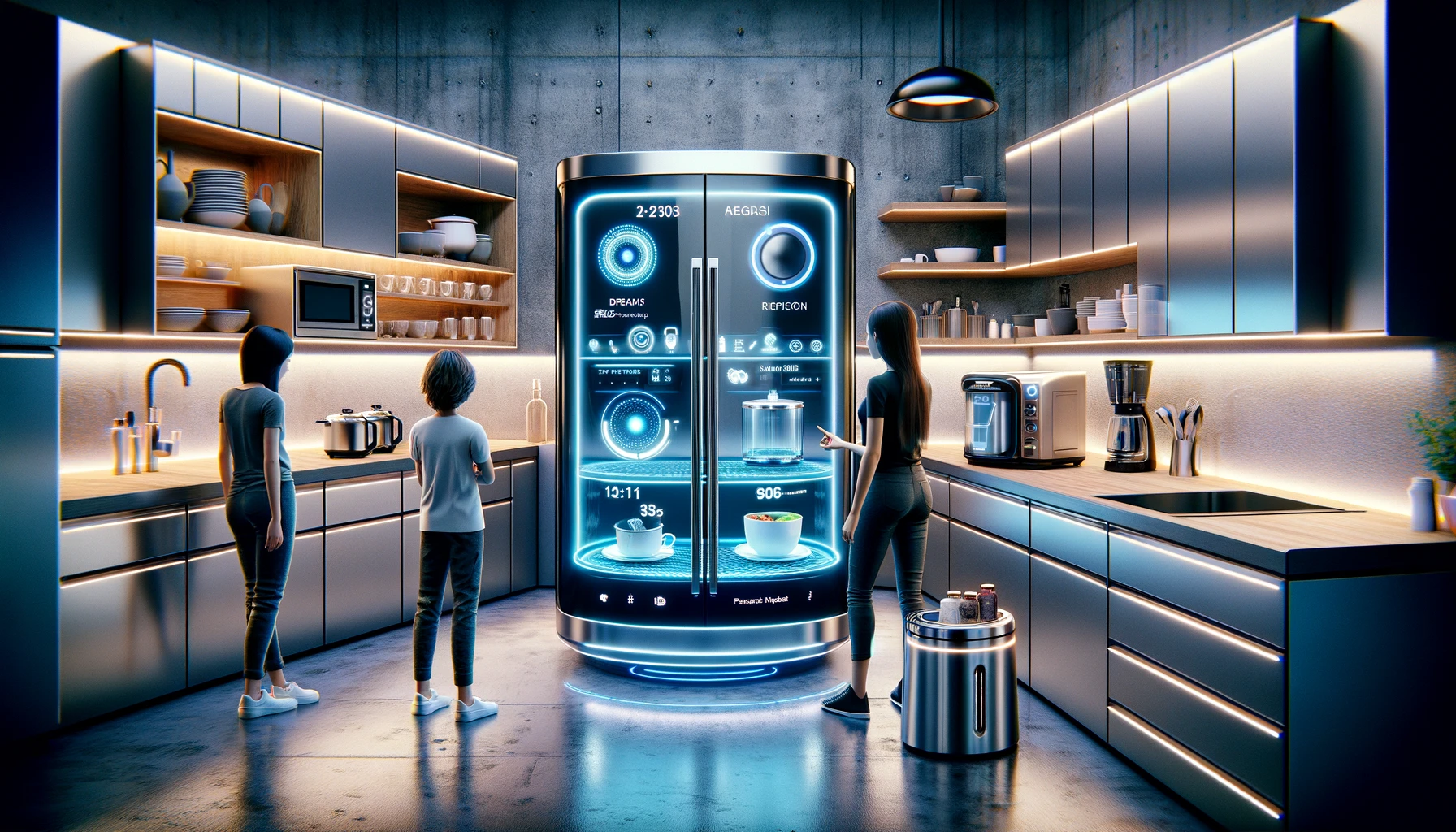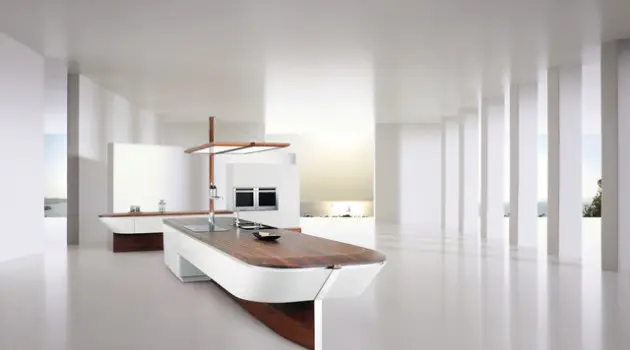Feng Shui, an ancient Chinese practice, emphasizes the flow of energy to create harmony and balance within a space. When applied to kitchen design, these principles can significantly impact the overall ambiance and functionality of the heart of your home. By strategically positioning elements such as the stove, sink, and refrigerator, and using salt according to Feng Shui guidelines, you can enhance not only the aesthetic appeal but also promote positive energy flow for nourishment and abundance.
From optimizing natural light to decluttering spaces, we’ll explore how simple adjustments can bring about a profound transformation in your culinary domain. Whether you’re a Feng Shui enthusiast or simply seeking ways to revitalize your kitchen space, embracing these ancient practices could be the key to unlocking a more harmonious environment where both cooking and dining experiences are elevated.
Key Takeaways
- Incorporate the Feng Shui kitchen triangle rule by positioning the stove, refrigerator, and sink in a triangular layout to optimize functionality and balance in the kitchen.
- Enhance energy flow in the kitchen by incorporating the five elements (wood, fire, earth, metal, and water) through decor, colors, and materials to create a harmonious and balanced space.
- Select a color palette based on Feng Shui principles to promote positive energy; for example, use calming blues for tranquility or vibrant reds for energy and passion.
- Position kitchen elements and furniture to invite positive energy, such as placing the stove in a commanding position and ensuring clutter-free countertops for smooth energy flow.
- Organize the kitchen according to Feng Shui principles by decluttering regularly, maintaining a clean and organized space, and incorporating storage solutions to minimize visual chaos.
- Integrate metal elements like stainless steel appliances to attract prosperity, and incorporate wood and earth elements for harmony and balance in the kitchen.
Feng Shui Kitchen Triangle Rule
Stove Placement
The stove’s placement in a kitchen holds great significance in feng shui. It symbolizes prosperity and wealth, making it crucial to position it strategically. Placing the stove in a commanding position, such as where the cook can see the room entrance, signifies harnessing prosperity according to feng shui principles. This placement is believed to invite positive energy and abundance into the household.
Conversely, an improperly positioned stove could lead to negative energy flow within the home. For instance, placing the stove directly opposite or next to a sink might create conflicting elements that disrupt harmony and abundance in the household. Therefore, adhering to feng shui guidelines when positioning the stove can help avoid such negative energy from manifesting.
Sink Positioning
In feng shui philosophy, optimizing the water element around the sink area is essential for attracting abundance and maintaining clean and flowing energy within your home. By ensuring that there are no conflicting elements near this space, you can promote harmony and balance while enhancing prosperity through proper water element management.
To illustrate further, having a cluttered or disorganized sink area may hinder smooth energy flow throughout your living space according to feng shui beliefs. Hence why maintaining cleanliness around this part of your kitchen is important for promoting harmonious energies throughout your home.
Refrigerator Alignment
Maximizing food abundance through proper fridge placement aligns with feng shui principles by balancing earth elements within its positioning. The refrigerator should be placed so that it allows for smooth traffic flow around it while also contributing positively to overall kitchen aesthetics and functionality.
Ensuring that there are no obstructions blocking access or creating congestion around this appliance promotes good fortune as per feng shui teachings; thus allowing positive energies associated with nourishment and sustenance to flourish freely throughout your living environment.
Incorporating the Five Elements
In Feng Shui, incorporating the five elements – wood, water, fire, metal, and earth – into kitchen layouts is essential for creating a harmonious and balanced space. By strategically integrating these elements, you can promote positive energy flow and enhance the overall ambiance of your kitchen.
Wood and Water
Incorporating wood elements in the kitchen promotes growth, vitality, and flexibility. This can be achieved by incorporating wooden furniture or decor such as chairs or cabinets made from wood. Furthermore, utilizing water elements in the form of a small indoor fountain or adding blue accents to represent water can bring abundance and fluidity to your kitchen space. Achieving harmony between these two energies involves balancing their presence without overpowering one another.
For example:
- Adding potted plants or fresh herbs (wood element) on wooden shelves.
- Placing a small tabletop fountain (water element) near the entrance of the kitchen.
Fire and Metal
Harnessing the fire element in your kitchen design can infuse passion and energy into this space. You can achieve this by incorporating red decor items like curtains or tablecloths. On the other hand, utilizing metal elements, such as stainless steel appliances or metallic light fixtures brings strength and clarity to your culinary environment. Balancing these energies involves ensuring that neither element dominates over the other within your kitchen layout.
For instance:
- Hanging copper pots (metal element) above an island counter.
- Incorporating red accents like dish towels or artwork (fire element) throughout the kitchen.
Earth Balance
Creating stability and nourishment through earth elements is crucial for achieving balance in your kitchen according to Feng Shui principles. This can be accomplished by introducing earthenware pottery or terracotta tiles into your interior design scheme. Additionally, harnessing grounding energy with neutral color palettes contributes to establishing harmony with earth placements within your culinary space.
For instance:
- Displaying ceramic bowls (earth element) on open shelves.
- Opting for warm beige tones for wall paint (earth colors).
Enhancing Energy Flow
Clutter-Free Spaces
A clutter-free kitchen is essential for promoting positive energy flow according to feng shui principles. When the kitchen is organized and free from unnecessary items, it allows for clear, open spaces that facilitate the smooth movement of energy. By eliminating clutter, you can create a harmonious environment that encourages the circulation of positive energy throughout the space.
Decluttering your kitchen involves getting rid of items that are no longer useful or necessary. This could include old utensils, expired food items, or unused appliances. By doing so, you not only create physical space but also eliminate stagnant energy that may be hindering the overall flow within your kitchen. For example, keeping countertops clear and uncluttered can help in maintaining an open and inviting atmosphere while preparing meals.
Strategic Lighting
Lighting plays a crucial role in enhancing positive energy flow within your kitchen based on feng shui principles. It’s important to utilize lighting effectively to create a well-lit and inviting space that promotes positivity and vitality. Natural light sources should be maximized whenever possible as they bring warmth and brightness into the room.
Balancing natural light with artificial lighting fixtures helps maintain an optimal balance within the space. Consider incorporating pendant lights above key areas such as islands or dining tables to add focused illumination where needed while also creating a cozy ambiance during meal times. Using adjustable dimmer switches allows you to control the intensity of artificial lighting based on different activities taking place in the kitchen throughout the day.
Smooth Traffic Patterns
Incorporating smooth traffic patterns in your kitchen design is vital for ensuring unobstructed pathways according to feng shui practices which aim at promoting positive energy flow throughout living spaces including kitchens. It’s important to arrange furniture and other elements in a way that facilitates ease of movement within this area of your home.
Color Palette Selection
The choice of colors plays a crucial role in creating a harmonious and balanced space. By incorporating the right color palette, you can promote specific energies, enhance vitality, and foster a serene atmosphere in your kitchen.
Harmonious Colors
Choosing colors based on feng shui principles allows you to harness the power of color psychology for a well-balanced kitchen design. For example, if you want to encourage nourishment and abundance, incorporating earthy tones like terracotta or olive green can be beneficial. These colors resonate with the nourishing energy of the earth element according to feng shui principles.
To create a harmonious color palette, consider utilizing color combinations that complement each other while promoting positive energy flow. For instance, pairing warm tones such as fiery reds or oranges with grounding shades like deep browns or rich yellows can evoke feelings of warmth and comfort in your kitchen space.
Energizing Accents
Incorporating energizing decor elements into your kitchen can significantly impact its overall vitality. You might consider adding vibrant touches through accent pieces such as colorful artwork, lively potted plants, or bold accessories. These accents serve to uplift the energy within your kitchen environment by infusing it with vibrancy and dynamism.
By carefully choosing energizing accents that align with the desired feng shui elements—such as using wood for growth and vitality—you can further enhance the positive chi (energy) circulating throughout your culinary space.
Calming Neutrals
Neutral tones play an integral role in creating a serene atmosphere within your kitchen by promoting relaxation and balance according to feng shui principles. Utilizing calming neutral hues like soft grays, gentle blues, or muted greens helps establish a tranquil ambience conducive to harmony and peace.
Positioning for Positive Energy
Stove Commanding Position
The stove holds significant importance in feng shui. Placing the stove in a commanding position within the kitchen is essential for harnessing good energy. By positioning the stove so that the cook can see the entrance, one can invite auspiciousness and ensure a sense of power and control. This strategic placement not only enhances cooking experiences but also contributes to maintaining a positive atmosphere within the space.
Integrating an herb garden into the kitchen layout serves as an effective way to infuse fresh, vibrant mood-enhancing energy. Bringing nature indoors through herb garden placements creates a harmonious connection with natural elements, promoting positivity and vitality within the kitchen. The presence of live plants not only adds visual appeal but also contributes to purifying indoor air quality, thereby fostering a healthier environment for culinary activities.
In addition to color selection, integrating artwork strategically into the kitchen plays a crucial role in enhancing positive vibes within this space. Utilizing art pieces that resonate with uplifting themes or serene landscapes can significantly contribute to elevating mood and inspiring creativity during culinary endeavors. Placing art thoughtfully around the kitchen area helps infuse inspiration while creating an environment conducive to enjoyable cooking experiences.
Organizing for Good Feng Shui
Storage Solutions
Storage solutions play a crucial role in maintaining positive chi flow. By organizing storage areas effectively, you can ensure that the energy within your kitchen remains balanced and harmonious. Maximizing functionality while minimizing clutter is essential for promoting good feng shui. For instance, using cabinets with doors rather than open shelves can help contain the visual chaos and create a sense of order.
Creating efficient storage solutions aligned with feng shui involves keeping items neatly organized and stored away when not in use. This allows energy to flow freely throughout the space without encountering obstacles or blockages caused by clutter. Utilizing drawer dividers, spice racks, and pantry organizers can also contribute to a well-organized kitchen that supports positive energy circulation.
Decluttering Methods
Implementing effective decluttering techniques is another key aspect of incorporating feng shui principles into your kitchen layout. Clearing out unnecessary items from countertops, cabinets, and drawers promotes harmony within the space by preventing stagnant energy from accumulating. For example, regularly purging expired food items from the pantry aligns with decluttering practices based on feng shui principles.
Adopting decluttering methods such as the KonMari method or practicing mindful consumption can further enhance the flow of positive energy within your kitchen. These approaches encourage individuals to assess their belongings thoughtfully and only retain those that truly spark joy or serve a practical purpose in their culinary endeavors.
Aesthetic Organization
Focusing on aesthetically pleasing organization methods contributes significantly to creating an environment that promotes positive energy according to feng shui principles. Harmonizing visual appeal with functional organization involves arranging cookware, utensils, and decor in visually appealing ways that support a sense of balance and tranquility within the space.
Metal Elements for Prosperity
Incorporating metal elements into kitchen layouts can significantly enhance the balance and prosperity in your home. By understanding how to utilize decorative and functional metals, you can create a harmonious space that promotes clarity, strength, durability, and efficiency.
Decorative Metals
Enhancing your kitchen with decorative metals brings forth an aesthetic appeal while also promoting strength and clarity. Consider adding metal decor elements such as copper pendant lights or stainless steel appliances. These additions not only elevate the visual appeal of the kitchen but also infuse it with the energy of metal elements. Balancing these energies through decorative accents helps create a sense of order and precision within the space.
For instance:
- Installing a wrought iron pot rack not only adds a touch of elegance to your kitchen but also represents the metal element in Feng Shui.
- Decorating with metallic artwork or frames can introduce metal energies into your kitchen while enhancing its visual allure.
Functional Metals
Utilizing functional metal elements in your kitchen design contributes to both durability and efficiency. When selecting fixtures for your kitchen, opt for materials such as stainless steel or chrome. These choices not only offer practicality but also harness the power of metal within the space.
For example:
- Choosing stainless steel countertops provides a durable surface that embodies the characteristics of metal according to Feng Shui principles.
- Incorporating metal hardware on cabinets and drawers not only adds a sleek touch to your kitchen but also aligns with Feng Shui’s emphasis on utilizing functional metals for practical purposes.
Wood and Earth for Harmony
Natural Materials
Incorporating natural materials into the kitchen design can help create a harmonious and balanced space. By embracing elements such as wood, stone, or clay, you infuse the kitchen with grounding and warmth. These natural textures bring an organic energy that connects the kitchen to nature, fostering a sense of tranquility and balance within the space.
For example:
- Using wooden cabinets or countertops brings in the nurturing energy of wood.
- Introducing stone flooring or backsplashes adds stability and strength to the kitchen environment.
Embracing natural materials not only enhances the aesthetic appeal but also promotes a soothing atmosphere that aligns with Feng Shui principles. The tactile experience of these materials further reinforces a connection to nature, creating a calming ambiance where family members can gather and nourish both body and soul.
Earthy Textures
The integration of earthy textures in the kitchen contributes to stability and balance within the space. Utilizing elements like rough-hewn wood surfaces or textured wall finishes evokes grounded, nurturing vibes that promote feelings of security and support. These textures enhance not only visual appeal but also tactile experiences within the cooking area.
For instance:
- Incorporating rough-textured ceramic tiles on walls or floors adds an earthy touch while promoting stability.
- Implementing natural fiber rugs or woven baskets introduces earthy textures that evoke warmth and comfort in the kitchen environment.
Lighting and Decor for Energy Flow
Paying attention to lighting and decor is crucial for promoting positive energy flow. Implementing layered lighting can significantly enhance the ambiance of the kitchen while creating a harmonious environment. By balancing task, ambient, and accent lighting, you can ensure that different areas of the kitchen are well-illuminated, contributing to a sense of balance and tranquility. For instance, pendant lights over an island or under-cabinet lighting can serve as task lighting, while recessed ceiling lights provide ambient illumination.
Enhancing visual interest through layered lighting techniques involves strategically placing light sources at various levels within the kitchen space. This not only contributes to a warm and inviting atmosphere but also promotes the circulation of positive energy throughout the area. Moreover, by incorporating decorative art into the kitchen, you can elevate its aesthetics while infusing personality into the space with art pieces that resonate positively within the environment. Whether it’s vibrant paintings or sculptures placed strategically around the room, choosing art that complements your personal style while aligning with feng shui principles can create a cohesive and balanced atmosphere.
Harnessing aromatherapy benefits in your kitchen is another way to uplift its ambiance using feng shui principles. Introducing soothing scents such as citrus or lavender through essential oils or candles can promote relaxation and positivity within this space where family meals are prepared and shared. Infusing crystals into your kitchen decor is believed to enhance positive energy flow according to feng shui practices. Placing crystals like clear quartz or amethyst in key areas of the kitchen may help promote harmony and balance by harnessing their unique energies.
Conclusion to Feng Shui in Kitchens
Summary
You’ve learned how to apply Feng Shui principles to create a harmonious and energizing kitchen space. By understanding the Kitchen Triangle Rule, incorporating the Five Elements, and selecting the right color palette, you can enhance energy flow and promote positive vibes in your kitchen. Positioning elements strategically, organizing thoughtfully, and integrating metal, wood, and earth elements can further contribute to prosperity and harmony. Don’t forget the impact of lighting and decor on energy flow.
Now it’s time to put these principles into action in your own kitchen. Take a critical look at your current layout and identify areas for improvement. Make small changes gradually, observing how they affect the overall energy in the space. Remember, the goal is to create a kitchen that not only looks great but also feels great to be in.
Frequently Asked Questions
How does the Feng Shui Kitchen Triangle Rule contribute to a harmonious kitchen layout?
The Feng Shui Kitchen Triangle Rule ensures that the stove, refrigerator, and sink form a triangle, allowing for efficient movement and balance in the kitchen. This arrangement promotes ease of cooking and enhances positive energy flow.
What are the key aspects to consider when selecting a color palette for a feng shui-compliant kitchen?
When choosing colors for your feng shui kitchen, focus on creating harmony by incorporating elements such as wood (green and brown), fire (red and orange), earth (yellow), metal (white and gray), or water (blue). These colors can enhance specific energies based on their corresponding elements.
How can lighting be optimized to improve energy flow in a feng shui-designed kitchen?
Proper lighting is essential in feng shui kitchens. Incorporate natural light, task lighting for work areas, and ambient lighting to create balanced energy flow. Avoid harsh fluorescent lights; instead, opt for warm-toned bulbs that promote comfort and positivity.
What role do metal elements play in enhancing prosperity within a feng shui-compliant kitchen?
Metal elements such as stainless steel appliances or metallic decor symbolize clarity, precision, and efficiency. By incorporating these elements into your kitchen design according to feng shui principles, you can invite prosperity into your space while fostering an organized environment.
Why is it important to organize the items within a feng shui-inspired kitchen according to its principles?
Organizing your kitchen based on feng shui principles helps maintain positive energy flow. Clutter-free spaces allow chi – vital life force – to circulate freely throughout the room. By decluttering regularly and organizing strategically, you create an environment conducive to well-being.
